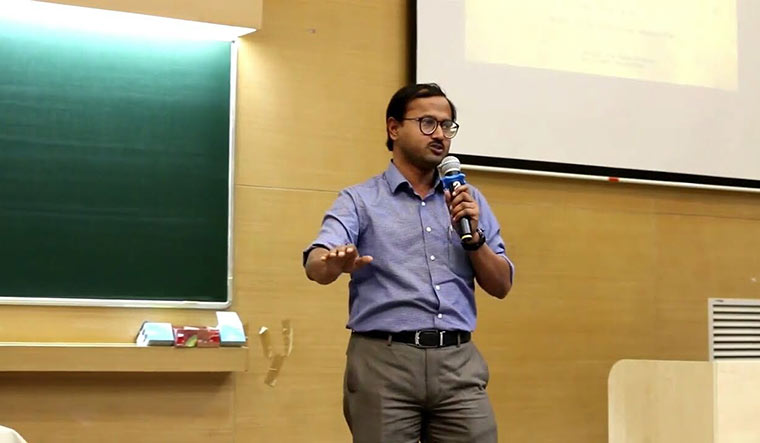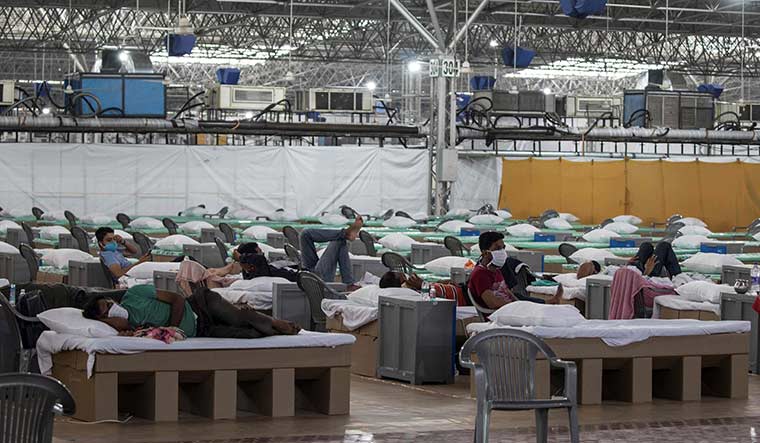PROFESSOR PARTHO SAROTHI RAY, a molecular biologist and associate professor at the Indian Institute of Science Education and Research, Kolkata, is among the several medical professionals the WHO is consulting for the management of Covid-19. In an interview with THE WEEK, Ray talks about the lockdown, unlocking and why India has botched the transition. Excerpts:
Q/What is the current situation?
A/We are in the middle of an increasing curve of viral infection. It will increase more in the days to come. During the lockdown, with very low testing and people cooped up in their homes, the virus incubated and spread among close contacts. Therefore, during the lockdown, there was no period in which the curve showed flattening. Now, after unlocking, it is spreading everywhere.
Q/How is it spreading?
A/Initially, the government focused on the so-called doubling rate and it was widely proclaimed that the rate had decreased. However, that is a useful parameter only during the early stages. It will definitely take longer for 5,000 cases to become 10,000 than [it takes for] 50 to become 100. We need to see how many days it takes to reach a fixed number like one lakh. In India, the first one lakh cases took 110 days. Now, it takes three to four days.
Q/Is there no way to check the increase now?
A/There is no easy way now. At the time when it was possible to test and isolate the limited number of cases, it was not done. Subsequently, tests have increased, but it is difficult to keep up with the number of cases now. Also, the medical system is reaching its limits as it was not sufficiently strengthened during this time.
Q/How long will the pandemic last?
A/No one should predict how long it would take. In the absence of real data parameters, no models have been able to successfully predict the course of the infection. This is not just a mathematical exercise; the virus is also mutating and changing the transmission dynamics. For example, in Europe, a single change in the spike protein, from aspartic acid to glycine (D614G), has made it significantly more infective than the virus found in Wuhan.
Q/Is it now a community-level infection?
A/It is fully a community-level infection whether we choose to call it that or not. In a recent exercise to look for Covid-19 antibodies in a sample of people, around 14 per cent were found seropositive in Kolkata.
Q/Is the virus as lethal as before?
A/Case fatality rate, which is the number of deaths divided by the number of positive cases, determines whether it is lethal or not. The case fatality rate in India is around 3 per cent. Then there is another measure, called infectious fatality rate, which is the number of deaths divided by the number of infected people. That is most likely 0.1 to 0.3 percent, as the number of infected people found is still low due to inadequate testing. This data is estimated because in some places in Europe and the US, nearly everyone was tested. India could also have the same rate as it is largely invariable. So, the virus is not very lethal in terms of numbers.
Q/As the virus has been around for a while, would fewer people die now?
A/The virus is already low in lethality—one to three in 1,000 infected people would possibly die. Some global reports suggest that case severity is decreasing. But this is anecdotal and I would not vouch for it. However, it is expected that less lethal variants of the virus will be spreading more.
Q/But when the virus is widespread, even a small percentage is a big number. How can medicine be used to manage it?
A/The nature of the disease is much better understood now. Covid-19 infection causes major inflammation in lungs, causing death. This inflammation allows water accumulation in lungs and clotting of blood in the small blood vessels. Drugs that can control the inflammation in severe cases can prevent deaths. Dexamethasone, a steroid, has given good results. It is quite cheap and, therefore, useful in India. In early stages of the infection, some of the antiviral drugs such as remdesivir or favipiravir are showing some results, but these are not specifically against this virus.
Q/But a lot of patients with comorbidities are dying, especially in cities.
A/That is more a result of policy paralysis and lack of planning. Hospitals are refusing patients. It is a policy matter that the government would have to deal with. Private hospitals must take all Covid-19 patients. See, for example, Germany. It had as high a number of cases as Italy or France or the UK, but much fewer deaths. It used its medical system to its utmost capacity. In India, patients are dying in ambulances after being refused admission in nine or 10 hospitals. It is a failure of intervention.
Q/As per reports, the government is planning to introduce a vaccine before August 15. Is it possible?
A/It is a gimmick. Look at the vaccine development effort at Oxford; they started in April, but said they could not give results before October. Many things, such as efficacy, safety and tolerability, have to be tested before a vaccine can be given to the people. I am more worried about safety. It would take at least three months to get the safety data.
There can be some rare adverse reactions. You may not get a reaction in 1,000 people, but if you apply [the vaccine] to one lakh, you may get 100 deaths. So, trials involving more people are necessary to rule out rare adverse reactions. Antibodies are generated in three to four weeks after vaccination, but it takes longer to estimate safety.
Q/A section of the Indian Council of Medical Research blames red-tapism.
A/India’s legal process is not very different from the regulations followed by other countries. Safety is the primary concern here. Many [levels of] approval and testing are required to make a safe vaccine. As a scientist, I say we should have as stringent a law as possible for vaccines.
Q/What is the WHO telling you now?
A/I think the world body is more worried about the unlocking process. Like an unplanned lockdown, unlocking is also unplanned. Take, for instance, public transport in Kolkata. Some sectors are open, but some are still closed. This has created huge pressure on the sectors that are open. And you are exposing more people to infection by causing crowding. Pressure should be evenly distributed and sectors opened accordingly. There has been unplanned unlocking in the US, too, and cases are rising very fast. Today, the epicentre has shifted to India, Brazil and Russia. There will be multiple waves of this virus and the second wave is yet to start.
Q/But unlocking is important.
A/Of course. But it is important to do it in a planned manner. For example, all offices should not have been opened together. In many places in Europe, they first opened government offices. And some weeks later, more essential private sector [offices]. Then, government and private offices on alternate days. Here, we seem to have no clear-cut policy.
Q/Today, people are more worried about the cost of treatment.
A/Only 10 per cent possibly require hospitalisation. Say five lakh are infected; 10 per cent of that is not a big number, and India should give them good treatment. What hurts is that we are failing to do that. This is because of policy paralysis. Private bodies are using corrupt practices. They are charging [too much] and there is also news of them giving false positive reports. The government needs to prevent commercialisation of a pandemic.
Q/How could India have done this?
A/Not everyone needed hospitalisation, but required isolation. All hotels are empty. We could have used them as large isolation units as they have separate rooms with attached bathrooms. We could have used indoor stadiums and other large vacant places. India did not enforce the pandemic laws for the benefit of the common people. Instead, they were enforced to target common people and make their lives difficult. We still need a comprehensive and people-friendly plan to tackle the pandemic.
The opinions expressed in this article are personal and do not purport to reflect the opinions or views of IISER, KOLKATA



